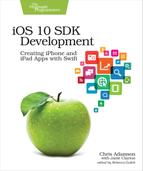Preface
iOS 10. Ten. Like the Roman numeral X. Perhaps more importantly, it’s a sign that we’re quickly approaching the tenth anniversary of the iPhone. Back in 2007, the operating system was called “iPhone OS,” and we wouldn’t even get a public SDK until a year later.
In that time, we’ve gone from an OS that ran on one model of one device to a variety of devices—iPhones, iPads, and iPod touches—and sizes. And it might be fair to also count the Apple Watch and Apple TV, whose OSes are offshoots of iOS, borrowing many of its frameworks and design patterns. Even the Touch Bar on the 2016 MacBook Pro can trace its roots back to iOS.
And along with the SDK, we got the revolutionary App Store. Much as Apple is criticized for its control over apps published through the store, it’s far more open than what came before. One nugget of wisdom from the bad old days of Java-based J2ME phones was that “carriers can’t stand you making a buck off their platform if they don’t get to keep 99 cents.” In historical context, Apple’s 30% cut is arguably modest.
And it’s because of that openness that we’ve seen an explosion of apps over the years, with over a million apps written for the platform. It’s only recently that Apple has stopped boasting about the number of apps on the store, and it’s even gone the other direction: stressing app quality over quantity, Apple has started pulling apps that haven’t been updated to modern standards.
And this is where you come in. With deadweight being cast aside, there is a much better opportunity for good, new apps to have a chance. Whether you want to show us something we’ve never seen, do an existing thing better, or fix an old app, now is probably a great time to do it.
